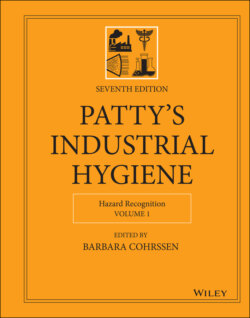Читать книгу Patty's Industrial Hygiene, Hazard Recognition - Группа авторов - Страница 115
4 CONTROL BANDING AS RISK COMMUNICATION
ОглавлениеControl banding (CB) is a qualitative occupational risk assessment strategy developed as a simplified approach to reduce work‐related injury and illness (11, 16). This model presents a complementary, graded approach that provides an effective means for determining standardized responses and controls for common work‐related issues, including environmental issues, that take into account the level of risk. This simplified approach with standardized outcomes is at the foundation of the CB strategy also serving as an effective risk communication approach. To better understand its historical background, the banding of occupational risks began in the 1980s for explosives events, radiation, lasers, and biological agents and in the early 1990s, the qualitative risk assessment process of CB was developed to control potential chemical exposures to workers in the pharmaceutical industry (17, 18). Beginning in the 2000s, CB models for chemical agents became internet‐based and their popularity grew in the IH profession internationally. Toward the end of that decade, CB became an essential component for assessing and controlling exposures in the nanotechnology industries, as it was a logical and proven approach to utilize in the absence of information, as can also be seen with OELs and regulations . In the 2010s, multidisciplinary CB strategies are being designed for integration within standardized occupational health and safety management systems (OHSMS) like ISO 45001 and OSHAS 18001 standards and Environmental Management Systems like ISO 14001 with the goal of providing a unified environmental and occupational risk management (EORM) approach (10, 11, 22).
